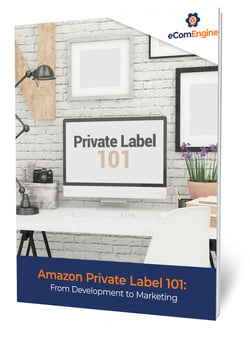Menu
Join Our Email List
- Receive our monthly newsletter.
- Stay up to date on Amazon policies.
- Get tips to grow your business.
This eBook covers everything from developing a private label product to the launch and marketing phases.
We respect your privacy and your information will only be used as explained in our privacy policy. You may unsubscribe at any time.
 Have you considered developing an Amazon private-label product? If you’re not sure where to start or simply want to optimize your current product development process, this is the eBook for you.
Have you considered developing an Amazon private-label product? If you’re not sure where to start or simply want to optimize your current product development process, this is the eBook for you.
Developing your own private label product allows you to control your branding and own the process from product development to making the sale. It can help you establish and grow your own brand on the Amazon marketplace and beyond while owning the Buy Box for your private label items.
Creating private label products is a great way to stand out on the Amazon marketplace, particularly when you have a creative product idea. However, the process of developing and marketing your private-label product can feel overwhelming at times. Get smart and actionable advice for Amazon merchants for every step of the journey in this resource.
You’ll get a great introduction to the Amazon private label product development process from an experienced Amazon consultant. This free downloadable eBook includes information about:
Fill out the short form to claim your free copy today. Best of luck with your new private-label product!
14321 Winter Breeze Drive
Suite 121 Midlothian, VA 23113
Call us: 800-757-6840





Copyright© 2007-2025 eComEngine, LLC. All Rights Reserved. eComEngine®, FeedbackFive®, RestockPro®, and SellerPulse® are trademarks or registered trademarks of eComEngine, LLC. Amazon's trademark is used under license from Amazon.com, Inc. or its affiliates.